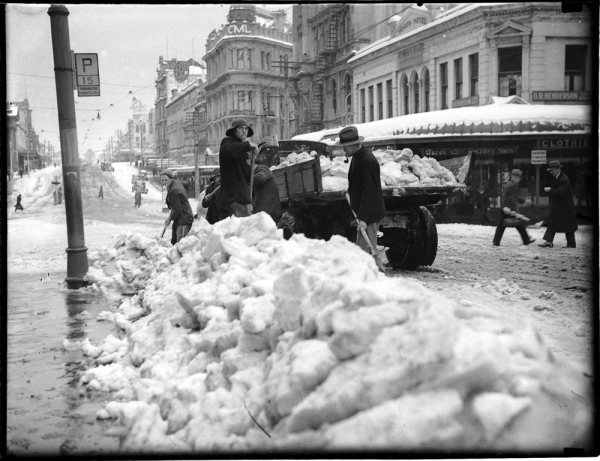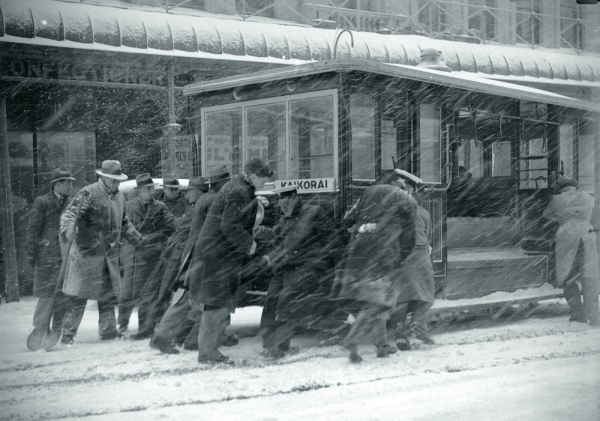NIWA has teamed up with Microsoft for a new project using artificial intelligence to combine historic weather records with breakthrough handwriting recognition tools.
In July 1939, pictures of trams struggling through snowdrifts made front pages across the country, as many Kiwis experienced the first white winter of their lives. In Clevedon, Auckland, locals threw snowballs, while the summit of Mt Eden lay five centimetres deep. Masterton’s town clock froze under the weight of snow clinging to its hands, and there were flurries at the Cape Reinga lighthouse.
NIWA’s archives are full of such fascinating glimpses into our past. Now, in a world-first project with Microsoft, NIWA is pioneering use of artificial intelligence to scan old weather observations and turn it into data to evaluate climate change and extreme events in a long-term context.
Principal climate scientist Dr Andrew Lorrey says the more we know about past weather, the better we can accurately predict climate patterns today and into the future.
“Was 1939 the last gasp of conditions that were more common during the “Little Ice Age”, which ended in the 1800s? Or the first glimpse of the extremes of climate change thanks to the Industrial Revolution?"
“We had snow in Northland in 2011, but having more detail from the past helps us characterise these extreme weather events better within the long-term trends. Are they a one-in-80-year event, do they just occur at random, can we expect to see these happening with more frequency – and why, in a warming climate, did we get snow in Northland?”
This trial project will use data from winter of 1939 to train machine learning tools to accurately transcribe the handwriting in old logbooks. The project has been awarded an AI for Earth grant by Microsoft to support local climate scientists in their quest.
The aim is to scan 3000 handwritten documents per day, upload them to the cloud, and generate searchable insights through Microsoft’s Cognitive Search application.
Patrick Quesnel, Senior Cloud and AI Business Group Lead at Microsoft New Zealand, says old data is the new data. “That’s what excites me about this. We’re finding better ways to preserve and digitise old data reaching back centuries, which in turn can help us with the future. This is data which is basically forgotten unless you can find a way to scan, store, sort and search.”
The problem for scientists like Dr Lorrey is the sheer volume of data lying unassessed and vulnerable in warehouses and archives. Weather records – some dating back to the mid-1800s – were meticulously kept in logbooks by sailors, whalers and land-based observers, with entries made several times a day. They recorded information such as temperature, barometric pressure, wind direction and comments about cloud cover, snow drifts or rainfall.
NIWA has previously relied on citizen scientists to key the handwritten data into a computer database for analysis. The scale of the project is enormous, involving more than a million photographed weather observations from old logbooks being painstakingly reviewed and loaded by hand into the Southern Weather Discovery website.
NIWA collaborates with scientists at NOAA in the US, the UK Met Office, and at universities across the globe who all have huge piles of old archived data ready to be recovered and analysed. Speeding up the data inputting and analysis with smart machine learning technology would enable the group – who band together under the Atmospheric Circulation Reconstructions over the Earth (ACRE) initiative – to produce better daily global weather animations and a longer-term perspective of past weather.
“Automated handwriting recognition is not a solved problem,” says Dr Lorrey. “The algorithms used to determine what a symbol is – is that a 7 or a 1? – need to be accurate, and of course for that there needs to be sufficient training data of a high standard.”
This article forms part of Water & Atmosphere 23, read more stories from this series.


